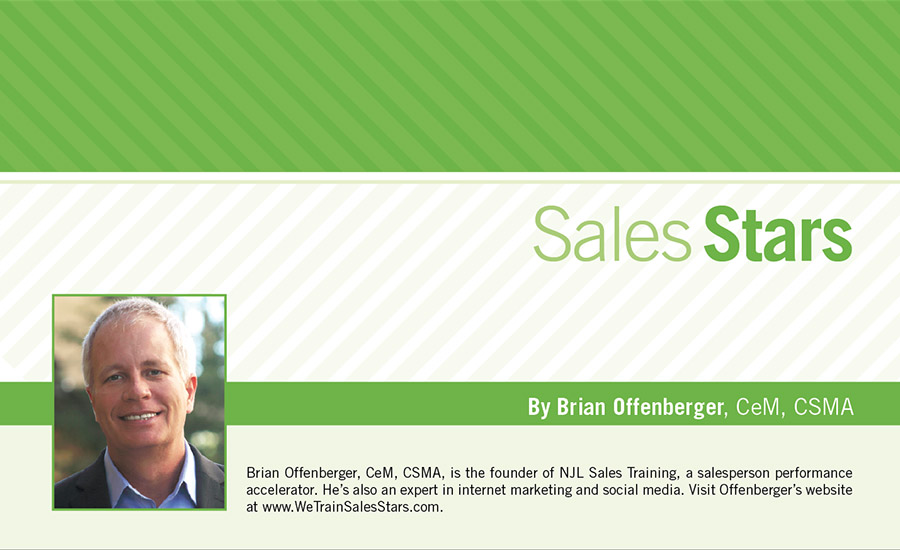Last week I spoke at an Arizona Alarm Association meeting. One of the members of the association asked me about social selling, what it was and if it was something he should be doing. He was quite surprised when I told him he probably had been doing some form of social selling for years.
Social selling is a buzzword that’s becoming popular in sales circles. It describes the sales process of leveraging social networks, on and offline, to find the right prospects, build valued relationships and to make sales.
Many of you that belong to Rotary, Chambers of Commerce or leads clubs have been practicing social selling for years. These offline professional networks have been used to develop contacts, cultivate relationships and make sales by many in the security industry. You know this process as networking.
When the Internet came along, new things happened that changed the sales process for most of us. One of these things was online social networks — places such as LinkedIn, Facebook, Twitter and others appeared. Now salespeople can find prospects, build relationships and make sales using these online social networks. They can do this from virtually anywhere in the world via smartphone, laptop or tablet.
In your market today there are people who want to buy what you have to sell. They have a need, they have a budget, and they have a time frame. If you were in front of them, they’d buy from you in a heartbeat. To get in front of them you’d have to know who they are, where they are, and how to approach them. That’s been a big challenge historically in selling. However, in our online socially connected world, finding and contacting people has become simpler than ever before.
In this social media era buyers are much more open. They post their resume, job titles and job duties online (LinkedIn). They post comments on forums, ask questions on Twitter and update their statuses on Facebook. They post questions and content to LinkedIn groups.
You can gain sales leads via these social networks simply by listening to your prospects. Tools such as TweetDeck or Google Alerts give you real-time insight to what your prospects are discussing online. This helps you understand their needs. It also allows you to engage them with useful, relevant information to help them with their issues and along their buying journey.
Let’s look at an example. In our industry one of the trigger events for sales is when firms face significant changes, such as constructing a new building. Using social selling, you’d set up a series of alerts to come to you when certain trigger phrases were used on social media. You’d participate in key groups on LinkedIn with your customers, and you’d comment and contribute in groups, blogs and forums when you had insight to offer.
These behaviors put you in the right place at the right time when new sales opportunities arise. By contributing and offering value during the buying process, you brand yourself as an expert, not just a salesperson peddling a product.
You can also use social networks to find targeted prospects and decision-makers. Using the search features of LinkedIn, for example, you can find people by industry, job title, keywords, company size, location and much more. In just a matter of minutes you can develop a highly defined prospect list of the very type of people buying what you have to sell.
The Internet has changed the way your customers shop for security systems.They go on Google. They read forums. They ask questions in Linked-In groups. They read reviews. They identify all of the players, research the available options and begin to formulate opinions — long before they reach out to a salesperson.
Online social networks allow you to learn more about prospects than ever before. You can:
• discover the key individuals within an organization.
• learn about the backgrounds of key individuals.
• identify who you know that knows your prospect.
• know what’s happening in near real-time.
• research key information and issues important to individuals, companies and industries.
With this kind of information, your focus is all about the customer. You are better positioned to show how your products and services solve the issues the prospect is facing.



